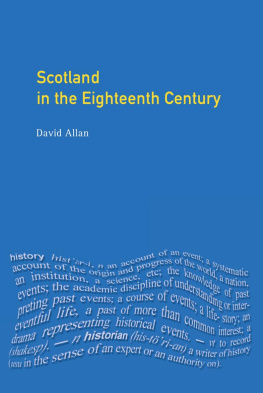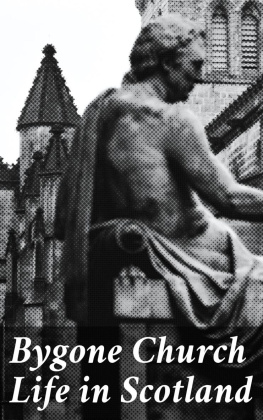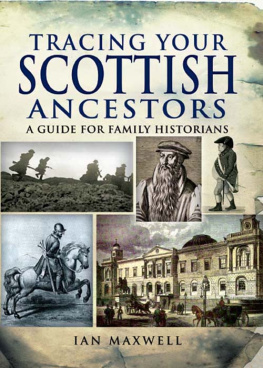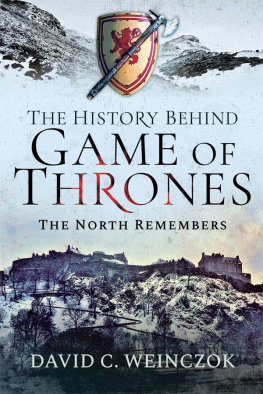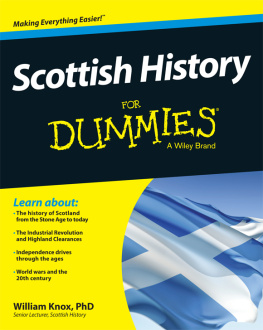Table of Contents
Preface.
Table of Contents
For a country of comparatively small extent, and with a large proportion of its soil in moor and mountain, histories of Scotland have been numerous and well-nigh exhaustive. The present work is not a chronicle of events in order and detail, but a series of pictures from the earlier history, expanding into fuller narratives of the more striking events in later times. And it includes portions of contemporaneous English history; for the history of Scotland can only be fully understood through that of its larger and more powerful neighbour.
The growth of a people out of semi-barbarism and tribal diversity, to civilization and national autonomy, is ever an interesting study. This growth in Scotland included many elements. The Roman occupation of Southern Britain banded together for defence and aggression the northern tribes. For centuries after the Roman evacuation the old British race held the south-western shires, up to the Clyde; the Anglo-Saxon kingdom of Northumbria extended to the Frith of Forth; there were Norse settlements on the eastern coast, in Orkney, and the Hebrides. Of the various races out of which the Scottish nation was formed, the Picts were the most numerous; but the Scotsa kindred race, wanderers from Irelandwere the more active and aggressivecame to assume the general government, and gave their name to the whole country north of the Solway and the Tweed.
It is interesting to trace how, in unsettled times, the burghs developed into little, distinct communities, largely self-governed. And the religious element in Scotland has been a powerful factor in shaping the character of the people and of the national institutions; the conflict of the Covenant was the epic in Scottish history. The rebellion of 1745, as the last specially Scottish incident in British history, is properly the closing chapter in Bygone Scotland.
D. M.
Hull Literary Club ,
St. Andrews Day, 1893.
BYGONE SCOTLAND.
The Roman Conquest of Britain.
Table of Contents
We cannot tellit is highly improbable that we ever shall knowfrom whence came the original inhabitants of the islands of Great Britain and Ireland. Men living on the sea-coasts of the great quadrant of continental land which fronts these islands, would, when the art of navigation got beyond the raft and canoe, venture to cross the narrow seas, and form insular settlements. It is indeed possible that, before that subsidence of the land of Western Europe which separated our islands from the mainland and from each other, was effected by the slow but ever-acting forces of geology, men were living on the banks of ancient rivers which are now represented by the Clyde, the Thames, and the Shannon.
The authentic history of Britain dates from the Roman invasion; before this event all is myth and legend. Half a century before the commencement of our era, Julius Csar, whilst consolidating in strong and durable Roman fashion his conquest of Gaul, was informed by certain merchants of the country that on the other side of the narrow sea which bounded them on the north, there was a fertile land called Britain, or the land of tin. With his legions, in the trireme galleys of the period, Csar crossed the narrow sea, and, so far as he went, he conquered the land.
The inhabitants were in a rude condition of life; semi-barbarous perhaps, but certainly the peoples of Fingal and Ossian in the north, and of Caractacus and Boadicea in the south, had advanced far beyond simple savagery. Climatic and geographical influences had moulded into a robust, if a fierce and stubborn type, the common materials of humanity. The ancient Britons had, in their ideas of government, advanced beyond mere clan chieftainship. Their annals, in stone cairns and the songs of bards, commemorated bygone battles and deeds of warrior renown. They had a religion with its trained priesthoodit was not a religion of sweetness and light, but of ferocity and gloom, of human sacrifices, and mystical rites. Its temples and altars were clusters of huge stones, arranged in forest glades on some astronomical principles. The Druidic faith was one of the many offshoots of ignorant barbarism, in which the celestial orbs and the forces in terrestrial naturelightning and tempestlife and firewere deified. Its priesthood was a close order, holding in their mystical gripe the minds and lives of the people. It has been said that the ancient Britons were such firm believers in a future state, that they would even lend each other money, to be repaid in the spiritual world. Their language was a dialect of the Gaelicthe language spoken in more ancient times over the greater portion of Western Europe.
The Roman invasion under Julius was little more than a raid. He marched his legions as far inland as the Thames, and again retired to the coast; he left Britain without forming a Roman settlement, and for nearly a hundred years the island remained free, and did a considerable maritime trade with Gaul and Scandinavia. In A.D. 43, the fourth Roman emperor, Claudius, with a large army, invaded Britain. The native tribes, although generally inimical to the Romans, had no concerted action amongst themselves, were often, indeed, at war with each other; and thus the disciplined soldiers of Rome had a comparatively easy task, although they had many fierce encounters with native bravery and hardihood. One British chief, Caractacus, held out the longest. He was the King of the Silurians, the dwellers in South Wales and its neighbourhood. For several years he withstood the masters of the world, but was ultimately defeated in battle, and he and his family were sent prisoners to Rome.
On the eastern coast, in what is now Suffolk and Norfolk, was a tribe called the Icenians. This tribe, under Boadicea, the widow of one of its kings, made, in the absence of the Roman governor, Suetonius, raids upon London, Colchester, and other Roman towns. When Suetonius returned, he defeated Boadicea in a battle near London. She killed herself rather than submit. Agricola succeeded Suetonius as governor, and he pushed the Roman Conquest northwards to a line between the Firths of Forth and Clyde. Beyond this line the Romans never made permanent conquests. Along this line Agricola built a chain of forts as a defence of the Roman province against incursions from the northern tribes, and as a base of operations in attempting farther conquests. In a campaign in the year 84, he was opposed by a native force under a chief called Galgacus. A battle was fought amongst the Grampian Hills, near Blairgowrie, with a hardly-won victory to Agricola. It was such a victory as decided him to make the Tay the northern boundary of Roman occupation. But Roman fleets sailed round the northern shoresplanting the Imperial Standard on Orkneyand returned, having proved that Britain was an island.
The northern portion of the island, beyond the line of forts, was then called Caledonia; border fighting was the rule, and the barbarians from the hills made frequent raids into the Romanized lowlands. Indeed, not only had the Romans to build a wall connecting the forts of Agricola, but also, as a second line of defence, one between the Tyne and the Solway Firth. The two walls prove the determination of the Romans to maintain their British conquests, and also at what a high rate they estimated the native resistance.





